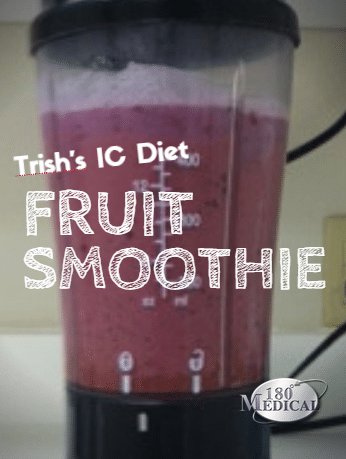
If you have been following my Living With Interstitial Cystitis blog series, you know that last year, I was diagnosed with interstitial cystitis (IC) as well as pelvic floor dysfunction. Since that time, I’ve learned some helpful interstitial cystitis diet tips that may help you too!
My Experience with the Interstitial Cystitis Diet
First, let’s go back to when I first started having painful bladder syndrome symptoms. At the time, I was in major denial. I thought there was no way food could affect my bladder.
However, sure enough, after my diagnosis, I started noticing how certain things I ate did seem to be related to increased pain in my bladder.
Later, my doctor suggested I should at least try the IC diet. Plus, when I needed to undergo some testing on my kidney function, I had to follow the diet strictly anyway so there was no better time to start.
When I began the interstitial cystitis diet, it appeared to have a direct effect on the degree of flank pain and bladder pain I was experiencing on a daily basis. As I cut out more of the potentially troublesome foods and drinks, I realized I was feeling better for longer periods of time with fewer flare-ups.
Before I started, I drank a full pot of coffee every morning, three diet sodas (containing both aspartame and saccharin) per day, processed foods, and pretty much anything else I wanted. With the old standard American diet, I had continuous bladder pain symptoms.
Today, I know that no food tastes good enough to be worth staying in pain and discomfort.
Interstitial Cystitis (IC) Diet Tips
First, I’d like to share that I’m still fairly new to my diagnosis. However, I had symptoms of IC for a long while before I actually sought medical treatment.
Like many others with IC, I also have other chronic medical conditions. I now see multiple doctors, including a rheumatologist, nephrologist, urologist, orthopedic doctor (I had one hip replaced at age 36), and a general practitioner.
Today, I follow the IC diet as strictly as I can, which is one of the biggest reasons my symptoms remain as under control as they can be. Unfortunately, my painful bladder syndrome symptoms are never completely gone. I always have some degree of burning sensation or urinary urgency. However, following the IC diet makes it more tolerable.
At home, we now make almost everything from scratch, which means we’ve cut out eating boxed dinners, processed foods, and such. Also, I no longer eat fast food or frozen dinners, which can be challenging on the nights when my daughters have school functions, but we have adjusted. I wholeheartedly suggest trying this diet to anyone who suffers from IC.
It takes willpower, but it’s worth it to feel better! As an added bonus, I have lost about 30 pounds since starting the IC diet. I feel healthier than I have in years! My skin looks great, and I have more energy. The key is to make sure you get enough protein along with fruit and vegetables!
Foods to Avoid in Interstitial Cystitis Diet
You can learn more at ichelp.org, which gives full details about the diet. However, here are some of the main foods you may want to eliminate from your diet if you are also living with interstitial cystitis.
- Alcohol
- Artificial sweeteners (aspartame and saccharin)
- Carbonated beverages (soda)
- Coffee
- Citrus
- Hot peppers and spicy food
- Yogurt or sour cream
- Tomatoes
- Soy
- Vinegar (including vinaigrette salad dressings )
- Processed food
- Cured meat
- Chocolate (a really bad trigger for kidney stones as well, which I also have)
- Canned foods
- Grapes
- Sharp cheeses
- Tea
- Black and red pepper
- Horseradish
- Cinnamon (this is on the “try it” list, but is one that I personally have to avoid)
- Pecans
I know. It’s a long list, and that’s not even all of the food that can be a potential bladder pain trigger. However, don’t feel discouraged. There are also many foods you can still eat!
My Bladder-Friendly Fruit Smoothie Recipe
I thought it might be nice to include a recipe for a fruit smoothie that I drink for breakfast and lunch each day.

My recipe includes bananas, although this is an item on the caution list. If you find that bananas bother you, try another type of fruit. You will need:
- ½-1 whole banana (or substitute another fruit)
- 1 cup blueberries
- ½ cup raspberries
- 1 cup skim milk
- 1/2 tablespoon agave nectar
As a personal preference, I use frozen berries. If you use fresh, you might add an ice cube or two, depending on your preferred consistency. Next, blend it all in a blender until smooth. Drink promptly.
If you are experiencing symptoms of interstitial cystitis, just know you are not alone in your personal journey. Stay tuned to the 180 Medical blog for more posts about interstitial cystitis, bladder health, catheter news, and more.